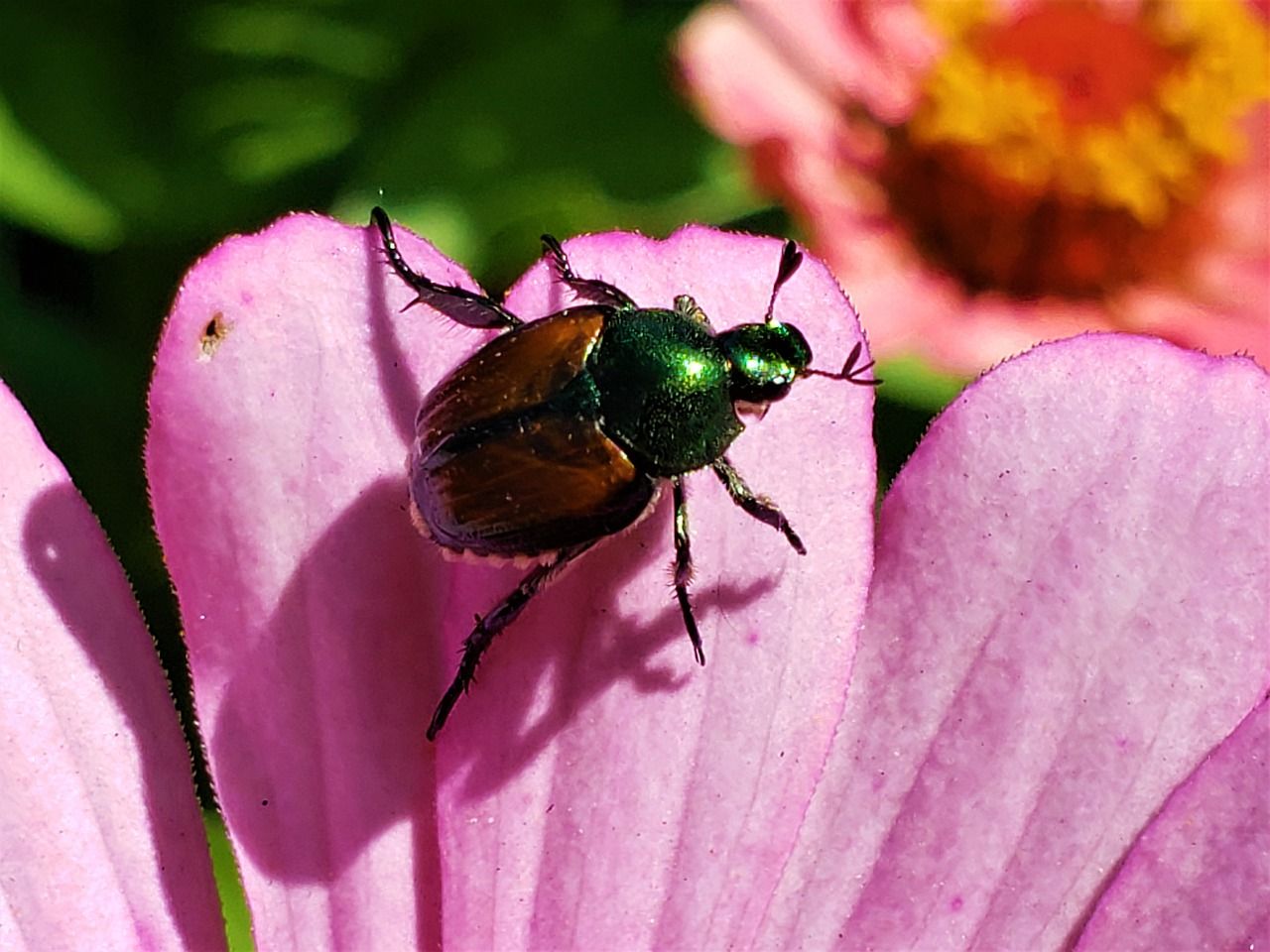A Master Gardener’s Advice on Fighting Japanese Beetles
go.ncsu.edu/readext?806239
en Español / em Português
El inglés es el idioma de control de esta página. En la medida en que haya algún conflicto entre la traducción al inglés y la traducción, el inglés prevalece.
Al hacer clic en el enlace de traducción se activa un servicio de traducción gratuito para convertir la página al español. Al igual que con cualquier traducción por Internet, la conversión no es sensible al contexto y puede que no traduzca el texto en su significado original. NC State Extension no garantiza la exactitud del texto traducido. Por favor, tenga en cuenta que algunas aplicaciones y/o servicios pueden no funcionar como se espera cuando se traducen.
Português
Inglês é o idioma de controle desta página. Na medida que haja algum conflito entre o texto original em Inglês e a tradução, o Inglês prevalece.
Ao clicar no link de tradução, um serviço gratuito de tradução será ativado para converter a página para o Português. Como em qualquer tradução pela internet, a conversão não é sensivel ao contexto e pode não ocorrer a tradução para o significado orginal. O serviço de Extensão da Carolina do Norte (NC State Extension) não garante a exatidão do texto traduzido. Por favor, observe que algumas funções ou serviços podem não funcionar como esperado após a tradução.
English
English is the controlling language of this page. To the extent there is any conflict between the English text and the translation, English controls.
Clicking on the translation link activates a free translation service to convert the page to Spanish. As with any Internet translation, the conversion is not context-sensitive and may not translate the text to its original meaning. NC State Extension does not guarantee the accuracy of the translated text. Please note that some applications and/or services may not function as expected when translated.
Collapse ▲ Japanese beetles, either you don’t have them and so don’t know much about them or you have them and are driven crazy every spring. I’m officially in full crazy mode come June.
Japanese beetles, either you don’t have them and so don’t know much about them or you have them and are driven crazy every spring. I’m officially in full crazy mode come June.
Japanese beetles are an invasive species. Adult females lay eggs in the ground in June. Eggs take about 2 weeks to hatch into white grubs. These grubs stay in-ground and feed on grassroots and organic matter until fall when they go deeper into the soil to emerge as adults in late spring. Then they fly over to my house (or yours) to feast on yummies growing in your prize flower or veggie garden. For about 40 days they feed on leaves.
You can avoid planting the plants considered highly delectable to the beetle such as roses, grapes, beans, apple, crabapple, cherry, and crape myrtle if planning your yard. I found this out two years into my fight, after planting crape myrtle, cherry, and apple trees. There are some resistant choices like dogwood, magnolia, and oaks. Some plants are supposed to repel Japanese beetles such as garlic, catnip, chives, nasturtium, or tansy. I’ve had poor results with all of these.
Japanese beetle traps were one of the first remedies I tried because it was so easy. That year, I had swarms of beetles and a precious few went into the traps. Mostly, they accepted the invitation and then proceeded munching on the plants nearby.
Covering favored plants during the feeding cycle does work. I use a fine mesh that allows sun and water in but keeps bugs out. For small to medium-sized plants, this is definitely the way to go. Larger plants are simply too difficult to cover.
Hand-picking Japanese beetles is time-consuming but can be strangely rewarding. Fill a bucket with a couple of inches of water and dish detergent. Go hunting in early morning or late afternoon when they are slower and simply pick off and toss in the bucket. They don’t sting or bite so picking is easy. I’ve picked hundreds of them daily and it provides this embattled gardener a sense of accomplishment. Some recommend putting a sheet under the plant and shaking it in the early morning. I’ve gotten beetles this way but I get more just hand picking.
Beneficial nematodes and milky spore are two treatments to apply to the ground and kill the grubs. These are safe and effective if applied properly. They are also costly especially if you are treating large areas.
Neem oil is a botanical insecticide. Sprayed on plants, it makes them less tasty to the feeding beetles. It is made from neem tree seeds. Labeled as being “practically non-toxic” to birds, mammals, bees, and plants means the beetle must eat the plant to be affected. It reduces feeding on your plants and also interferes with insects’ hormone systems that can make it difficult to lay eggs.
I wish you luck and perseverance in the fight!
Written by Dianne Olansky, Master Gardener Volunteer of Clay County



